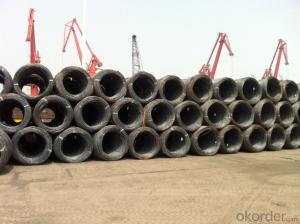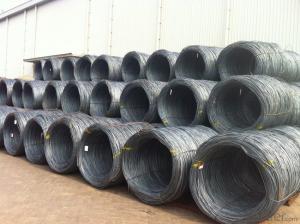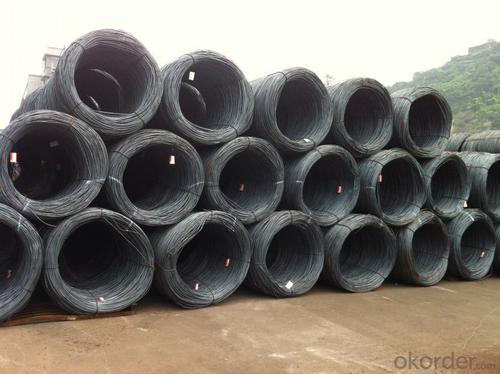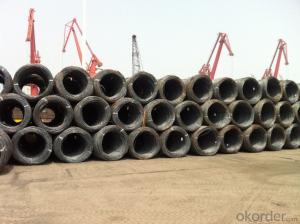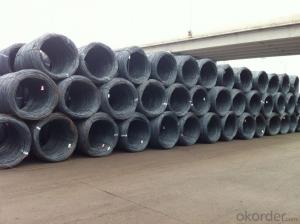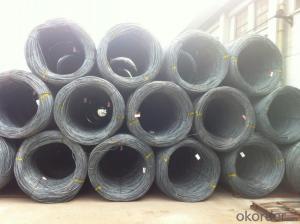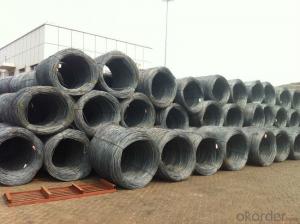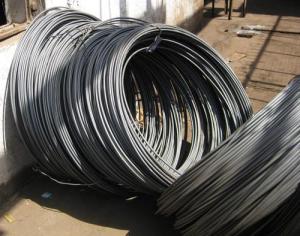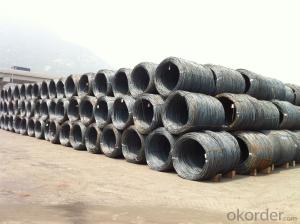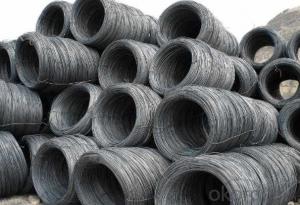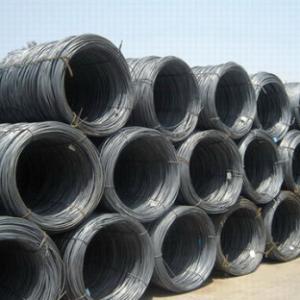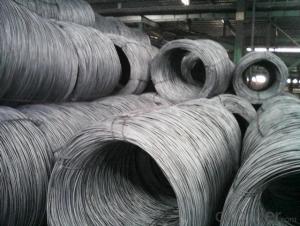SAE 1008 Wire Rods with Best price and Great Quality
- Loading Port:
- Tianjin
- Payment Terms:
- TT or LC
- Min Order Qty:
- 25 m.t.
- Supply Capability:
- 10000 m.t./month
OKorder Service Pledge
OKorder Financial Service
You Might Also Like
Product Description:
OKorder is offeringSAE 1008 Wire Rods with Best price and Great Quality at great prices with worldwide shipping. Our supplier is a world-class manufacturer of steel, with our products utilized the world over. OKorder annually supplies products to European, North American and Asian markets. We provide quotations within 24 hours of receiving an inquiry and guarantee competitive prices.
Product Applications:
SAE 1008 Wire Rods with Best price and Great Quality are ideal for structural applications and are widely used in the construction of buildings and bridges, and the manufacturing, petrochemical, and transportation industries.
Product Advantages:
OKorder's SAE 1008 Wire Rods with Best price and Great Quality are durable, strong, and resist corrosion.
Main Product Features:
· Premium quality
· Prompt delivery & seaworthy packing (30 days after receiving deposit)
· Corrosion resistance
· Can be recycled and reused
· Mill test certification
· Professional Service
· Competitive pricing
Product Description:
Specifications of SAE 1008 Wire Rods with Best price and Great Quality:
Steel Grade: sae1006+sae1008B , Standard: GB Diameter: 5.5mm, 6.5mm, 7mm,8mm,9mm,10mm,12mm,14mm
Diameter Tolerance:±0.3mm 6.5mm can be drawing into 2mm/8.0mm can be drawing into 3mm
Brand Name: N-RIVER Place of Origin: Hebei, China Mainland Application: construction, building etc
Chemical Composition:
Please kindly find our chemistry of our material based on Q235 as below for your information
Usage and Applications of SAE 1008 Wire Rods with Best price and Great Quality:
After hot-rolled the products shaped into coil and delivery as finished product, including round, square, rectangular, hexagonal and so on. Since most of the products are round, it is generally called wire rod. Carbon steel wire rod is widely used in construction and manufacturing. Carbon steel wire rod is mainly used for reinforcement of reinforced concrete and welded structure or reprocessed (roberts , nail, etc.) materials, especially used to produce wire drawing, welding electrode, nails, spring, electronic, precise machinery parts and so on.
Packaging & Delivery of SAE 1008 Wire Rods with Best price and Great Quality:
Packaging Detail: products are packed in coil and then shipped by container or bulk vessel
Each coil weight: 2-3MT
Delivery Detail: within 45 days after received deposit or LC.
Label: to be specified by customer, generally, each bundle has 1-2 labels
Trade terms: FOB, CFR, CIF
FAQ:
Q1: Why buy Materials & Equipment from OKorder.com?
A1: All products offered byOKorder.com are carefully selected from China's most reliable manufacturing enterprises. Through its ISO certifications, OKorder.com adheres to the highest standards and a commitment to supply chain safety and customer satisfaction.
Q2: How do we guarantee the quality of our products?
A2: We have established an advanced quality management system which conducts strict quality tests at every step, from raw materials to the final product. At the same time, we provide extensive follow-up service assurances as required.
Q3: How soon can we receive the product after purchase?
A3: Within three days of placing an order, we will begin production. The specific shipping date is dependent upon international and government factors, but is typically 7 to 10 workdays.
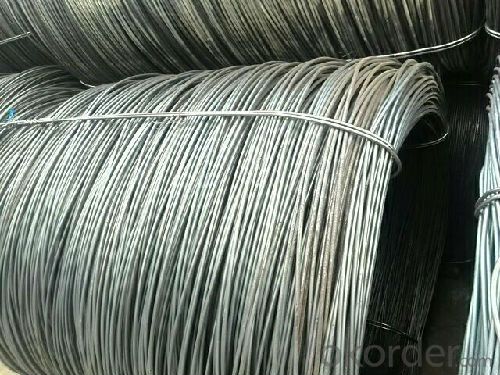
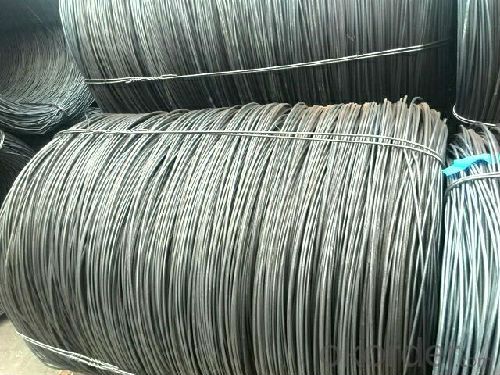
- Q: What are the main factors affecting the market advocacy of steel wire rod?
- The main factors affecting the market advocacy of steel wire rod include supply and demand dynamics, global economic conditions, government regulations and policies, technological advancements, competition from other materials, and the overall performance and quality of steel wire rod.
- Q: What are the different types of packaging options available for steel wire rod?
- There are several packaging options available for steel wire rod, including coils, bundles, spools, and pallets. Coils are the most common packaging option, where the wire rod is wound into a circular shape and held together with binding material. Bundles involve grouping several lengths of wire rod together and securing them with straps or wire. Spools are used for smaller quantities and involve winding the wire rod onto a cylindrical core. Pallets are used for larger quantities and involve placing the wire rod on a wooden or plastic platform, often secured with straps or stretch wrap.
- Q: How are steel wire rods used in the production of barbed fences for security purposes?
- Steel wire rods are an essential component in the production of barbed fences for security purposes. These wire rods are typically made from high-quality steel, which is known for its strength and durability. To manufacture barbed fences, the steel wire rods are first straightened and then cut into desired lengths. These rods are then fed into a machine that twists them together to form a sturdy wire strand. This twisted wire strand serves as the base for the barbed fence. Once the wire strand is formed, sharp barbs are added at regular intervals along its length. These barbs act as a deterrent, making it difficult for intruders to climb over or pass through the fence. The barbs are typically made by cutting small pieces of the steel wire rod, shaping them into sharp points, and then attaching them securely to the wire strand. The barbed wire strand is then stretched between posts or attached to existing structures to create a formidable security barrier. The high tensile strength of the steel wire rods ensures that the fence remains taut and secure, even under pressure or attempts to cut through it. Barbed fences made with steel wire rods are widely used for security purposes due to their effectiveness in deterring unauthorized access and providing perimeter protection. They are commonly used in prisons, military installations, industrial facilities, and private properties to enhance security and prevent trespassing. In summary, steel wire rods are crucial in the production of barbed fences for security purposes. They provide the strength, durability, and sharpness required to create an effective deterrent against intruders and protect the perimeter of various establishments.
- Q: What are the common packaging materials used for steel wire rod coils?
- The common packaging materials used for steel wire rod coils include wooden pallets, steel strapping, plastic wrapping, and metal sheets. Wooden pallets are often used as a base to stack and store the coils, providing stability and easy handling during transportation. Steel strapping is used to secure the coils tightly together, preventing any movement or damage during transit. Plastic wrapping is commonly used to provide additional protection against moisture and dust, ensuring the coils remain in optimal condition. Metal sheets are sometimes placed on top of the coils to provide extra protection and prevent any external damage. These packaging materials are essential for ensuring the safe and efficient handling, storage, and transportation of steel wire rod coils.
- Q: What are the factors that affect the cost of steel wire rod?
- Some factors that affect the cost of steel wire rod include the price of raw materials such as iron ore and scrap metal, energy costs, transportation and logistics expenses, market demand and competition, production and manufacturing processes, labor costs, and global economic conditions.
- Q: Can steel wire rod be used in the production of wire mesh?
- Yes, steel wire rod can be used in the production of wire mesh.
- Q: What are the safety regulations for steel wire rod manufacturing plants?
- The safety regulations for steel wire rod manufacturing plants are designed to ensure the well-being and protection of workers, as well as the prevention of accidents and hazards within the facility. These regulations typically cover various aspects of the manufacturing process, equipment, and workplace environment. One important safety regulation is the implementation of proper machine guarding. Machinery and equipment used in the manufacturing process should have adequate guards to prevent accidental contact with moving parts, which can result in severe injuries. Regular inspections and maintenance of these guards are necessary to ensure their effectiveness. Another key safety regulation is the provision of personal protective equipment (PPE) to workers. This includes items such as safety goggles, gloves, helmets, and steel-toed boots. PPE should be worn as required by the nature of the task being performed to protect workers from potential hazards like flying debris or falling objects. Fire safety is also a crucial aspect of the safety regulations for steel wire rod manufacturing plants. Fire prevention measures such as proper storage and handling of flammable materials, regular inspection and maintenance of fire suppression systems, and the presence of clearly marked emergency exits are essential to minimize the risk of fires and ensure a safe working environment. Additionally, safety regulations often mandate regular training programs for employees. These programs should cover topics such as hazard identification, emergency response procedures, proper handling of equipment and materials, and safe work practices. Ongoing training and education help to ensure that workers are aware of potential risks and equipped with the knowledge to prevent accidents. Furthermore, safety regulations may require the implementation of safety protocols for the handling and transportation of steel wire rods. This can include proper lifting techniques, the use of cranes or forklifts, and secure storage and transportation methods to prevent injuries and damage to the products. Overall, safety regulations for steel wire rod manufacturing plants are comprehensive and aim to create a safe working environment for employees. Compliance with these regulations is essential to prevent accidents, protect workers, and maintain the integrity of the manufacturing process.
- Q: Can steel wire rod be used in the production of fasteners?
- Yes, steel wire rod can be used in the production of fasteners. Steel wire rod is a versatile material that can be used to manufacture a wide range of fasteners including screws, bolts, nuts, and rivets. It has excellent strength and durability properties, making it suitable for various applications where fasteners are required. Steel wire rod can be easily formed, threaded, and shaped to create fasteners of different sizes and configurations. Additionally, steel wire rod can be heat-treated and surface-treated to enhance its corrosion resistance and mechanical properties, further increasing its suitability for fastener production.
- Q: What are the different types of steel wire rod coatings available?
- Steel wire rods can be coated with various types of coatings, each offering unique advantages. Some common coatings include: 1. Galvanized Coating: Zinc is applied to the surface of the steel wire rod, providing excellent corrosion resistance. This makes it suitable for outdoor applications or environments with high humidity or exposure to corrosive substances. 2. Phosphating Coating: A chemical conversion process creates a thin layer of phosphate crystals on the surface of the steel wire rod. This coating improves adhesion, corrosion resistance, and acts as a good base for painting or further treatment. 3. Polymer Coating: Polyethylene or polypropylene coatings protect against corrosion, abrasion, and chemical exposure. These coatings are highly flexible and can be customized to meet specific requirements like UV resistance or electrical insulation. 4. Epoxy Coating: Known for exceptional adhesion and chemical resistance, epoxy coatings are commonly used in environments with harsh chemicals, like the oil and gas industry or marine environments. They also protect against corrosion and abrasion. 5. Zinc-Aluminum Coating: This coating involves applying a layer of zinc-aluminum alloy to the steel wire rod. It offers excellent corrosion resistance and is often used in applications requiring both corrosion and heat resistance, such as automotive or construction industries. 6. Copper Coating: Copper coatings are primarily used for their electrical conductivity properties. They enhance conductivity and reduce electrical resistance in steel wire rods used for electrical applications like wiring or cables. These examples highlight the various coatings available for steel wire rods. The selection depends on specific requirements like corrosion resistance, electrical conductivity, or chemical resistance. Choosing the appropriate coating ensures optimal performance and durability of the steel wire rods.
- Q: What are the common applications of low alloy and oil tempered steel wire rod?
- Low alloy and oil tempered steel wire rod have a wide range of common applications in various industries. One common application is in the manufacturing of automotive components. Low alloy and oil tempered steel wire rod is used to make springs, such as suspension springs and valve springs, which are crucial for the proper functioning of vehicles. The high strength and durability of these steel wire rods make them ideal for withstanding the demanding conditions and heavy loads experienced by automobiles. Another common application is in the construction industry. Low alloy and oil tempered steel wire rod is used to make reinforcing bars (rebars), which are essential for reinforcing concrete structures like buildings, bridges, and highways. The strength and ductility of these steel wire rods ensure that the reinforced structures can withstand the stresses and pressures they are subjected to, providing stability and longevity. In addition, low alloy and oil tempered steel wire rod is also used in the manufacturing of various industrial equipment and machinery. These steel wire rods are commonly used to make wire ropes, which are used in cranes, elevators, and other lifting equipment. The high tensile strength and resistance to corrosion of these steel wire rods make them suitable for withstanding heavy loads and harsh environments. Furthermore, low alloy and oil tempered steel wire rod finds applications in the production of wire mesh, fencing, and other wire products. The strength and durability of these steel wire rods ensure that the wire products can withstand external forces and provide security or containment in various settings, such as construction sites, agricultural fields, and industrial facilities. Overall, the common applications of low alloy and oil tempered steel wire rod include automotive components, construction reinforcement, industrial equipment, and wire products. The unique properties of these steel wire rods, such as high strength, durability, and resistance to corrosion, make them versatile materials that contribute to the functionality and reliability of various products and structures.
Send your message to us
SAE 1008 Wire Rods with Best price and Great Quality
- Loading Port:
- Tianjin
- Payment Terms:
- TT or LC
- Min Order Qty:
- 25 m.t.
- Supply Capability:
- 10000 m.t./month
OKorder Service Pledge
OKorder Financial Service
Similar products
Hot products
Hot Searches
Related keywords

